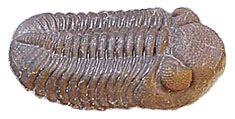Adventures on Earth for January 12 edition of The Review
By George E. Beetham Jr.
Last week we discussed the melting and refreezing of the Antarctic ice sheet and how it might react to global warming.
There are two issues that we need to keep in mind. First, the temperature has been increasing when measured over decadal time. Second, the ice in Antarctica is slowly melting and giving way.
The collapse of the Larsen B ice shelf in the 1990s is the forerunner of more to come. Ice has been fastened to Antarctica for hundreds of thousands of years. But ice has been separating from the continent.
Polar ice does not melt from above. It melts as sea water heats up, from below.
Beneath the sea ice there are large numbers of krill, tiny crustaceans that live just under the ice. Fish feed on krill, and other creatures, including penguins, feed on the fish.
It is a food chain that has existed for hundreds of thousands of years and constitutes a major biological part of the Antarctic ecosystem.
We don’t think of ice as being an ecosystem, but it is. As sea ice melts, there is concern that krill may disappear. If that happens, the entire biologic ecosystem is likely to collapse.
Other than aesthetics, that would not affect humans. But melting ice will affect us as sea levels rise as much as 200 feet.
The effects will not become apparent today, tomorrow, or even next year. But as the sea continues to warm, collapse of the polar ice caps is likely to occur quickly.
In the Arctic, sea ice is melting relatively quickly. People who live and work in the Arctic have noticed it. The effects are inescapable. A whole host of Arctic-dwelling creatures are endangered. If change comes quickly, creatures have no time to adapt. Adaptation is one way for life to avoid extinction.
On land, the Antarctic ice sheet is also melting from below. Water trickles through the ice until it hits bedrock below. There it acts as a lubricant, propelling glacial ice down slope toward the sea. The same thing is happening in Greenland.
This is happening as we discuss it. It is not conjecture that it might occur five or six decades from now. It is happening.
As polar ice melts and sea levels increase, there will be consequences for humans. First, people living in coastal areas will be forced to move to higher ground. Secondly, as sea levels increase, there will be less inhabitable land on which to live, work, and farm.
There will be less fresh water available as the land surface shrinks. As one commentator has suggested, we can live without coal, oil, gas. We cannot live without water.
All the polar ice will melt into the sea, picking up salinity. But it will also dilute salty sea water, and that is likely to affect the ocean currents that carry equatorial warm water toward the poles and cold polar water toward the equator. That, in turn, could trigger another ice age.
Humans may be adaptable and able to cope with changing climate. The question we face for our future and the futures of our descendants is whether our food sources will adapt.
Native Americans tell us the world is interconnected. Science tells us the same thing. As species go extinct, that affects other species, particularly if the extinct species is a food source for creatures up the chain.
As resources become scarce, wars are likely to be fought to either protect one’s resources or to take resources that are needed from others who have them.
What is happening in Antarctica affects all of us, whether we choose to believe what is happening or not. It is just one more part of a larger process. It tells us that we need to prepare to deal with what is to come.

No comments:
Post a Comment